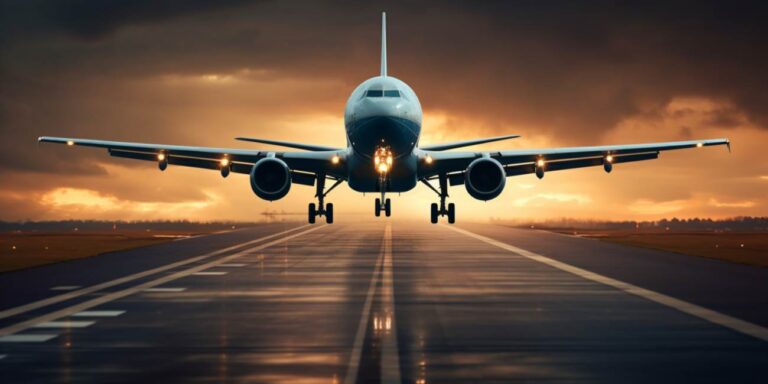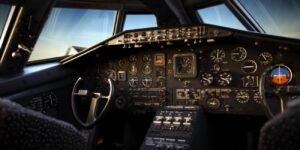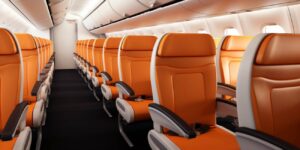One of the most significant impacts of the airplane was its role in connecting distant regions of the world. Prior to its existence, long-distance travel was a cumbersome and time-consuming process. The airplane, with its ability to cover vast distances in a fraction of the time, connected previously isolated communities and cultures. This connection facilitated the exchange of ideas, goods, and people, contributing to a more interconnected and globalized society.
The airplane played a crucial role in accelerating economic activities. The speed and efficiency of air travel opened up new opportunities for businesses to expand their operations globally. Rapid transportation of goods and personnel became feasible, fostering international trade and economic growth. The airplane became a symbol of progress and modernity, propelling societies into an era of unprecedented economic development.
Moreover, the airplane had a profound impact on communication within societies. The ability to traverse vast distances quickly allowed for more immediate and direct connections between people. This not only transformed the nature of business communications but also had a significant impact on personal relationships. Families and friends separated by geographical boundaries could now be more easily reunited, strengthening social bonds and fostering a sense of global community.
In the realm of defense, the airplane played a critical role in shaping the course of history. Its integration into military strategies not only changed the dynamics of warfare but also influenced geopolitical landscapes. The ability to conduct aerial reconnaissance and deploy airpower reshaped the nature of conflicts, ultimately impacting the balance of power between nations.
Additionally, the airplane had a transformative effect on tourism and cultural exchange. As air travel became more accessible, people were able to explore and experience diverse cultures firsthand. This cultural exchange contributed to a greater understanding and appreciation of global diversity, breaking down stereotypes and fostering a more inclusive and interconnected world.
The airplane made travel easier by reducing time spent : fast flights
The advent of the airplane revolutionized the way we travel, making it more accessible and significantly reducing the time spent on journeys. The introduction of fast flights has become a game-changer in the world of transportation, connecting distant locations in a matter of hours.
Before the era of airplanes, long-distance travel was often arduous and time-consuming. The speed of traditional modes of transportation, such as ships and trains, paled in comparison to the rapid pace set by airplanes. The ability to cover vast distances in a fraction of the time has opened up new opportunities for exploration, business, and personal connections.
Air travel not only offers efficiency but also brings about a sense of convenience that was previously unimaginable. The concept of boarding a flight and arriving at your destination within hours has become a reality for millions around the globe. This time-saving aspect of air travel has transformed the way people plan their trips and conduct their affairs.
The impact of fast flights is particularly evident in the realm of business. Executives and professionals can now attend meetings in different parts of the world without losing precious days to travel. The efficiency gained from reduced travel time translates into increased productivity and better business outcomes.
Moreover, the tourism industry has experienced a boom, thanks to the accessibility provided by airplanes. Travel enthusiasts can explore diverse cultures and landscapes without being hindered by lengthy travel durations. Destinations that were once considered remote are now easily reachable, contributing to the globalization of tourism.
The significance of fast flights extends beyond individual experiences and business dealings. In times of emergencies, the ability to swiftly transport people, medical supplies, and aid to distant locations is invaluable. Airplanes play a crucial role in disaster relief efforts, showcasing their versatility and importance in times of need.
Let’s delve into the key factors that make fast flights possible:
| Technological Advancements | Efficient Air Traffic Management | Aerodynamic Designs |
|---|---|---|
| Advancements in aircraft technology, including powerful engines and lightweight materials, contribute to increased speed and fuel efficiency. | Modern air traffic control systems ensure smooth coordination and minimize delays, allowing airplanes to navigate busy skies with precision. | Aerodynamic designs optimize fuel consumption and enhance speed, making airplanes more streamlined and capable of reaching higher velocities. |
Airplanes connected distant locations quickly : rapid transport
Modern air travel has revolutionized the way we connect distant locations, whisking us away to far-flung destinations at an unprecedented pace. The marvel of aviation lies in its ability to cover vast expanses quickly, linking cities and countries in a dance of efficiency and speed.
Imagine a world where traversing rapidly between continents was a distant dream, and now look up into the sky where airplanes effortlessly bridge the gap. These flying marvels are not merely vessels but time machines, propelling us to short time fast travel realities that were once the stuff of fantasy.
The aviation industry has etched its mark in history, transforming the way we perceive distant locations. No longer constrained by the limitations of traditional modes of transport, we soar above geographical boundaries, the wings of airplanes cutting through the air with a purposeful determination to make rapid connections.
Picture the sheer dynamism of air travel, where the concept of short time fast becomes more than just a phrase. As you board a plane, you embark on a journey where every passing second brings you rapidly closer to your destination. The blend of technology and engineering propels us forward at a pace that once seemed implausible.
Let’s delve into the mechanics that make this rapid travel possible. The powerful engines of an aircraft, combined with sophisticated navigation systems, create a harmonious synergy that propels us quickly across vast oceans and continents. It’s a testament to human ingenuity that we’ve harnessed the skies to make the world a smaller, more interconnected place.
Consider the impact of airplanes on global commerce and cultural exchange. Goods and ideas traverse the globe at a speed that was inconceivable in the past. The world, once divided by distant locations, is now seamlessly connected, thanks to the ability to travel rapidly and cover distant distances in a short time fast.
As we marvel at the rapid evolution of air travel, it’s essential to acknowledge the role of innovation. Engineers and designers continually push boundaries, developing aircraft that can defy gravity and propel us to short time fast destinations. The relentless pursuit of efficiency ensures that airplanes not only connect distant locations but do so with an unparalleled speed.
Airplanes enabled the spread of ideas and culture : idea sharing
From the soaring heights of the sky, airplanes have not only revolutionized travel but have become conduits for the spread of ideas and culture, fostering idea sharing between countries in a way unparalleled in human history.
The fuselages of these flying machines carry more than just passengers; they transport a tapestry of diverse thoughts, beliefs, and creative expressions. In the realm of spread of ideas and culture, airplanes act as ambassadors, connecting nations and facilitating an exchange that transcends geographical boundaries.
Consider the vast expanse of the globe, and within it, the intricate web of connections established by constant air travel. This intricate dance of metal birds has enabled an unprecedented idea sharing phenomenon, where individuals from different corners of the world can engage in intellectual discourse, fostering a cultural kaleidoscope.
One of the most fascinating aspects of this spread of ideas and culture is the way in which airplanes serve as flying libraries, carrying not just people but also the knowledge and creativity of one society to another. The inflight mingling of minds, the conversations sparked between strangers with different backgrounds, all contribute to the idea sharing that shapes the cultural landscape.
Moreover, the influence of airplanes on the spread of ideas and culture is not limited to the passengers on board. Cargo holds, laden with goods from various lands, carry with them the essence of different societies. Whether it’s art, literature, or technological innovations, these flying vessels become conduits for cultural exchange, contributing to the idea sharing ethos.
It’s not just about the physical transportation of people and goods; it’s about the interconnectedness of minds. The spread of ideas and culture facilitated by airplanes is like a global symphony, where each note played in one part of the world resonates in another, creating a harmonious blend of diversity.
Imagine a table where the cultural richness of nations is laid out, each contribution a unique piece in the grand puzzle of global unity. Airplanes, with their speed and reach, weave this intricate tapestry, fostering idea sharing and promoting the spread of ideas and culture between countries.
As we traverse the skies, let us marvel not only at the engineering feat of these airborne vessels but also at the intangible cargo they carry—the ideas that transcend borders, the culture that knows no territorial limits, and the shared understanding that unites us all.






